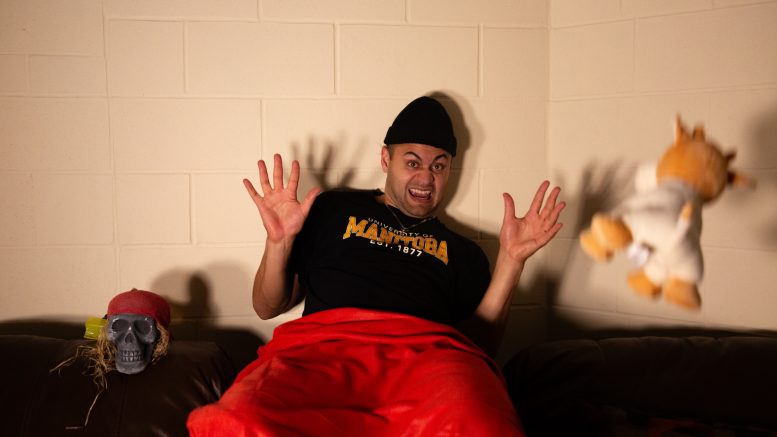Fear is one of the most primal emotions and has fascinated researchers and curious minds alike for generations. But what goes on in our brains when we experience fear? And why do we willingly expose ourselves to it, especially during Halloween?
Associate professor in the department of psychology Steven Greening explores these questions through the neurocognitive processes involved in controlling and adapting to emotions like fear.
Greening views fear as an evolved state that encompasses both physiological reactions and behavioral responses like sweating, an elevated heart rate and the instinct to either flee or freeze when faced with a threat.
At its core, fear is associated with a subjective feeling of being afraid — a shared human experience, especially during the Halloween season.
The brain plays a pivotal role in processing fear. Greening highlighted the amygdala — a region of the brain that processes emotions — and its robust response to fear. The amygdala is accompanied by responses from other brain regions, such as the anterior insula and the dorsal anterior cingulate cortex, which contribute to our fear response.
While debates about the uniqueness of amygdala activity in response to fear continue, evidence suggests that these regions are indeed involved in the experience of fear.
Greening explained that humans are not only capable of responding to threats but are also able to communicate their fear to others.
“We have this evolved capacity for responding to threat,” he said.
“We also have, as part of our fear responses, our expression of fear to most, our fear can become contagious or can signal to the other members of our group that this is a fearful situation, and we should all flee together.”
Greening’s work studying fear emerged after he was initially drawn toward understanding how emotions can sometimes overwhelm individuals, and the capacity to regulate emotion effectively piqued his interest.
“The reason for studying fear was almost a practical consideration,” he said.
Being one of the most widely studied emotions, fear presented an opportunity for Greening to explore the various aspects of emotion regulation.
Furthermore, fear is closely tied to mental health issues like post-traumatic stress disorder and various forms of phobias and anxiety, making it a crucial area of study.
“It’s an interesting emotion that’s widely studied and has some broader applicability in terms of being of benefit to some people,” he added.
Greening highlights an important misunderstanding about fear.
“One of the misconceptions is that fear is negative and therefore it ought to be avoided at all costs,” Greening said.
He emphasized the multifaceted nature of fear. Fear is deeply interconnected with our survival instincts. When appropriately linked to a threat, it is highly adaptive and can motivate individuals to take action — increasing their chances of survival.
This is also where the link between fear and entertainment comes into play.
Halloween, a season filled with horror movies, haunted houses and eerie decorations, is synonymous with fear. Experiencing fear in a safe and controlled environment like a haunted house offers an opportunity to practise feeling fear without real danger — much like a fire drill prepares students for emergencies.
“Nothing’s actually going to happen [to us], and so we can experience the sensation, those psychological responses associated with fear,” Greening said. “We can practise experiencing them.”
Greening highlighted that while voluntary exposure to fear differs from involuntary fear, there is an element of practice involved in voluntarily experiencing something scary.
“It’s different, but similar enough that it might almost be like a practice — the practice of being in a threatening situation, the practice of being afraid,” he said.
To Greening, the Halloween season and activities like haunted houses exemplify that “fear, in certain contexts, can also be enjoyable.”





